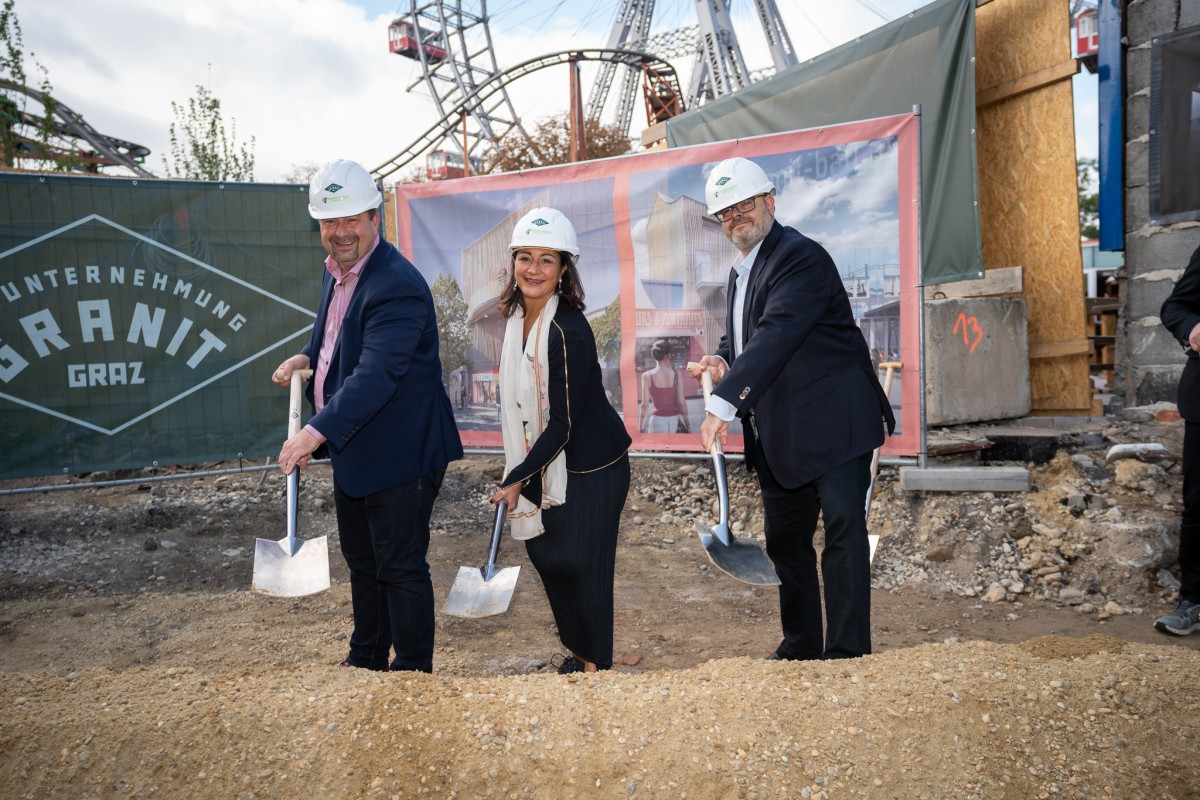Sponsored Content
New Museum for the Vienna Prater
Construction work has begun on May First Street. A sustainable wooden building, the Prater Museum, will be built there by 2024. The museum, which will do justice to the presentation of the more than 250-year history of the Viennese amusement park, will be one of the first public wooden buildings in Vienna and a model for the integration of ecological and social sustainability.
 The groundbreaking ceremony of the Prater Museum was attended by the District Head of Vienna Leopoldstadt Alexander Nikolai (l.), City Councillor for Culture Veronica Kaup-Hasler (m.) and Wien Museum Director Matti Bunzl (r.), among others. / Picture: © Magistrat der Stadt Wien / PID / David Bohmann
The groundbreaking ceremony of the Prater Museum was attended by the District Head of Vienna Leopoldstadt Alexander Nikolai (l.), City Councillor for Culture Veronica Kaup-Hasler (m.) and Wien Museum Director Matti Bunzl (r.), among others. / Picture: © Magistrat der Stadt Wien / PID / David Bohmann
After decades on the outskirts, hidden in a side wing of the Planetarium, the Prater Museum will move to the center of the "Wurstelprater". A new museum is being built on the former site of an amusement arcade on the Straße des Ersten Mai, which the Vienna City Government envisions will do justice to the more than 250-year history of Vienna's amusement park, the Wiener…
or Log In
Fast News Search





